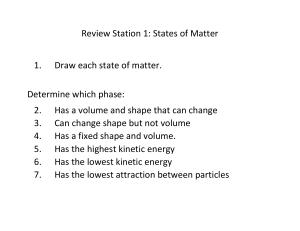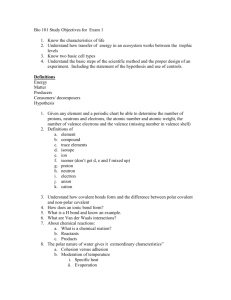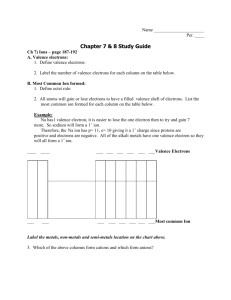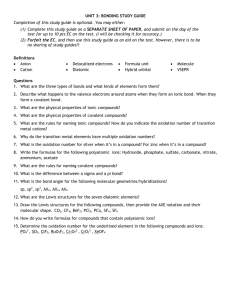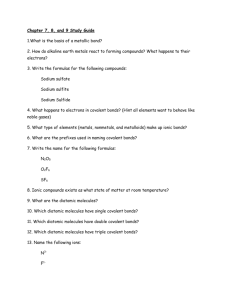6A-7 Chapter 6A Review WKST
advertisement
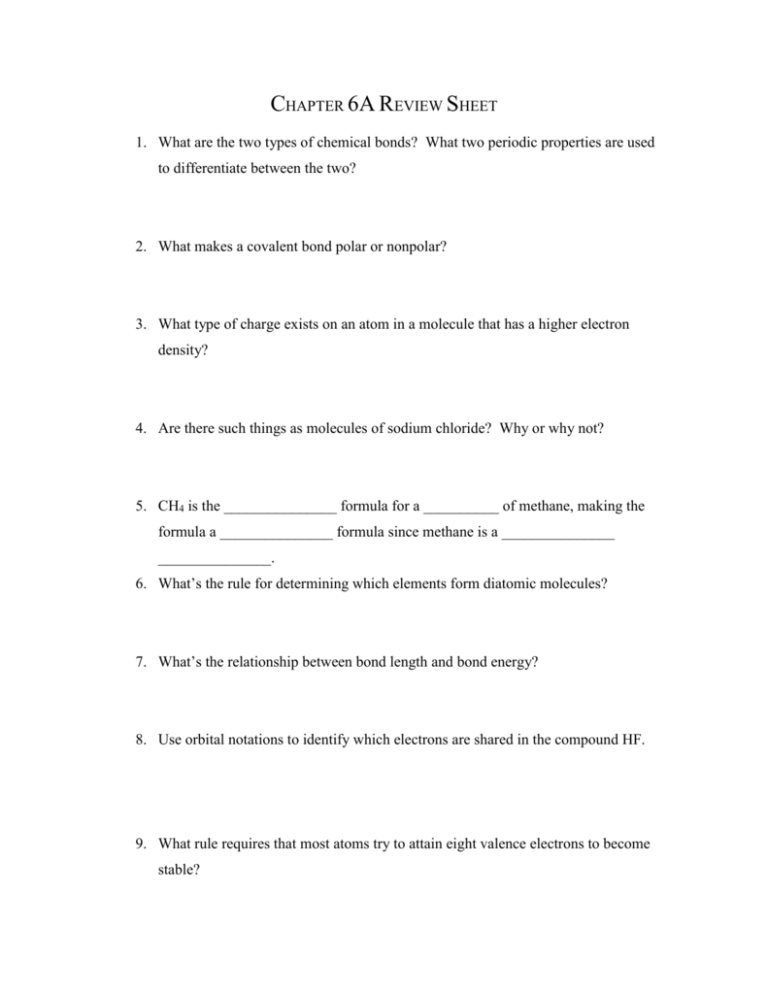
CHAPTER 6A REVIEW SHEET 1. What are the two types of chemical bonds? What two periodic properties are used to differentiate between the two? 2. What makes a covalent bond polar or nonpolar? 3. What type of charge exists on an atom in a molecule that has a higher electron density? 4. Are there such things as molecules of sodium chloride? Why or why not? 5. CH4 is the _______________ formula for a __________ of methane, making the formula a _______________ formula since methane is a _______________ _______________. 6. What’s the rule for determining which elements form diatomic molecules? 7. What’s the relationship between bond length and bond energy? 8. Use orbital notations to identify which electrons are shared in the compound HF. 9. What rule requires that most atoms try to attain eight valence electrons to become stable? 10. Draw Lewis structures and resonance structures (if applicable) for each of the following molecules. a. CH3Cl d. SeCl6 (expanded valence) b. SiS2 e. NH2– c. BO33– (expanded valence) f. C2HCl 11. Using electron dots, determine the formula that will result from the combination of the following atoms. a. Cu (2 valence e–s) and O b. Ba and F c. Ga and S 12. Draw a simple crystal lattice of KF. How can one measure the strength of the attractive forces within the crystal lattice? 13. What factors must be considered when determining whether an ionic or covalent compound will conduct electricity? 14. How do the melting and boiling points of ionic compounds and molecular compounds compare? What factors need to be considered when comparing these two types of compounds? 15. What must be considered when comparing the aqueous solubility of ionic and covalent compounds?
